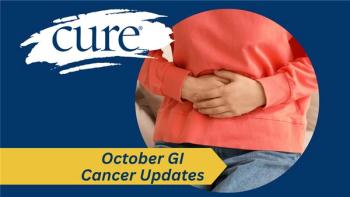
Immunotherapy Combination Demonstrates Promise in Melanoma
Key Takeaways
- Opdivo and Yervoy combination improves overall survival by 26% in advanced melanoma compared to Yervoy alone, with a two-year OS rate of 64% versus 54%.
- Toxicity management and patient selection are crucial for Opdivo/Yervoy use, with high comorbidities potentially limiting combination therapy.
The immunotherapy combination of Opdivo and Yervoy continues to show promise as it presented overall survival benefits for patients with advanced melanoma.
Patients with advanced melanoma showed a 26 percent improvement in overall survival (OS) when combining Yervoy (ipilimumab) when Opdivo (nivolumab), rather than just using Yervoy alone.
In a two-year assessment of the phase 2 CheckMate-069 trial, which was recently presented at the 2016 AACR Annual Meeting, 142 treatment-naïve patients with unresectable stage 3 or metastatic stage 4 melanoma were randomized to receive either the combination (95 patients) or Yervoy plus placebo (47 patients) every three weeks for four doses followed by Opdivo or placebo every two weeks until disease progression or unacceptable toxicity.
In the overall treatment population, the two-year OS rate was 64 percent with the combination compared with 54 percent for Yervoy alone. The median OS at two years in patients randomized to either the combination or monotherapy has not been reached.
The two-year OS rate with Opdivo / Yervoy was 69 percent compared with 53 percent for Yervoy alone in patients with BRAF wild-type melanoma. The median OS among patients was not reached with the combination regimen and was 24.8 months with Yervoy monotherapy.
Previous findings from the CheckMate-067 study demonstrated a superior progression-free survival and overall response rate with the combination over the monotherapy.
The data make it clear that, for many patients, Opdivo / Yervoy is the best option, says Patrick Ott, clinical director, Melanoma Center, Center for Immuno-Oncology, physician, assistant professor of Medicine, Harvard Medical School, Dana-Farber Cancer Institute.
“I feel very strongly that the combination is the way to go,” Ott says. “The data says it all. Due to the potential durability with the combination, I think it is hard to argue that we could just start out with PD-1 monotherapy.”
How do you decide which patients should receive combination therapy versus monotherapy?
Despite its benefits, there are still many questions that remain regarding the use of Opdivo / Yervoy in advanced melanoma. In an interview with CURE, Ott discusses toxicity management and patient selection considerations required with the combination, and its role in BRAF-mutant melanoma.
We really consider everybody for the combination. Patients who have high comorbidities may not be candidates for the combination, but we have had 80-year-old patients who have received it; they have had great outcomes.
Therefore, I wouldn’t say, “Don’t try it with older people.” We do have some patients who don’t want it, but that is relatively rare. We also enroll patients in clinical trials where other combinations are explored, and it is certainly very reasonable to try that approach.
How much of a factor are toxicities in determining whether patients should receive the combination?
What questions remain to be answered regarding the use of Opdivo/Yervoy in melanoma?
The toxicities with Opdivo / Yervoy are a big problem; however, it’s often worth it for patients. Patients have a 20 percent higher chance of having a durable response for metastatic melanoma. That may mean that they have to spend a few weeks in the hospital or go on steroids for a few months and be OK. For most patients, the 20 percent improvement in chance is worth that. If you talk to patients who went through it and had good outcomes, they certainly think it’s worth it.
There is primary resistance and some patients also develop resistance to immunotherapies. Increasing the response from 40 percent to 60 percent is really remarkable, but there are still 40 percent of patients who don’t respond in the first place.
What other immunotherapy combinations have potentional in melanoma?
There are also patients who progress on the Opdivo / Yervoy combination, but those numbers are very low so far. There is a lot of work to do to assess why that is—in terms of studying the immune infiltrates and biopsies and doing a comprehensive immune analysis.There is the PD-1 and IDO inhibitor combination that has been fairly successful. Yervoy plus T-VEC is also being investigated. Data were presented two years ago on 16 or 17 patients that showed fairly provocative response rates with that combination. There is now a larger study with 200 patients.
There are other combinations of checkpoint inhibitors plus vaccines that are interesting.
What is the optimal approach for patients with BRAF-mutant melanoma?
We have a clinical trial where we first use a targeted agent for one month, and then we start with Opdivo / Yervoy. They will get the targeted therapy again if they progress after Opdivo / Yervoy. That is one sequential approach under consideration.
There is potential synergy between BRAF inhibition and immunotherapy. Hopefully, there will be higher durability of responses with this approach.
The question of what agent should be the frontline in BRAF melanoma is being investigated in a large study; however, that study is currently on hold. It is a phase 3 study starting with immunotherapy or a BRAF-targeted agent. Then, it switches when the patient progresses.
Looking at the survival of those patients will hopefully answer this question. In the meantime, I think it is conceivable that, depending on how aggressive one is to start with immunotherapies, the majority of melanoma doctors start with immunotherapies now, unless there needs to be an immediate response.
Depending on what treatment you use—because the responses are very durable—some patients may never need it.
What can researchers in other cancer types learn from the use of immunotherapy in melanoma?
Melanoma is a trailblazer for other diseases in immunotherapy. It is leading the way in terms of where things are going. With the approval of Opdivo / Yervoy in melanoma, similar combinations are being investigated in all types of cancers.
The toxicities are different in other tumors, and that has led to different dosing and scheduling of the combination in other cancers. I have a feeling that may even come back to melanoma where some other schedules prove to be much less toxic. If we can cut the toxicities with melanoma from 50 percent to 25 percent, it may actually be very worthwhile.




